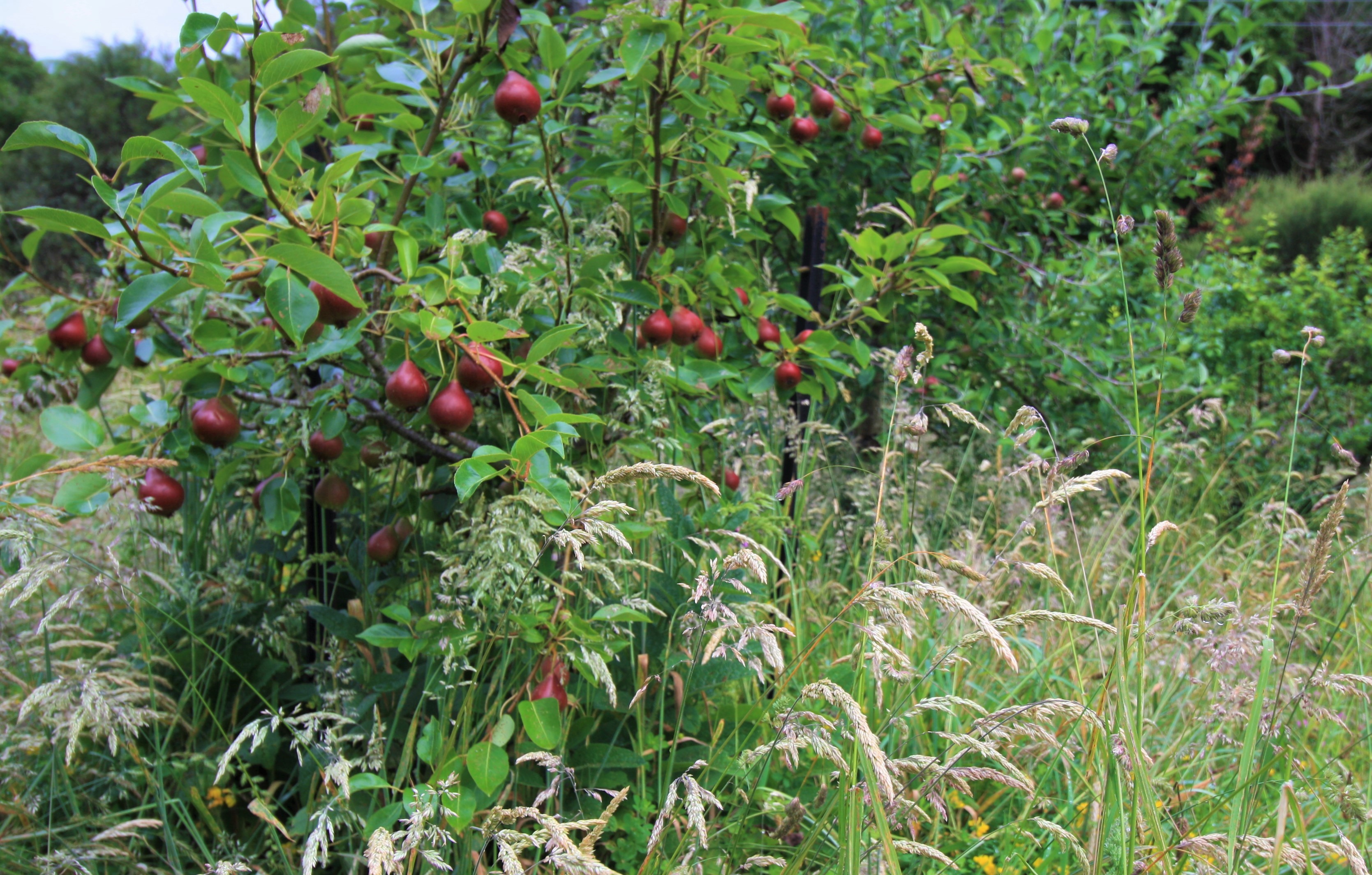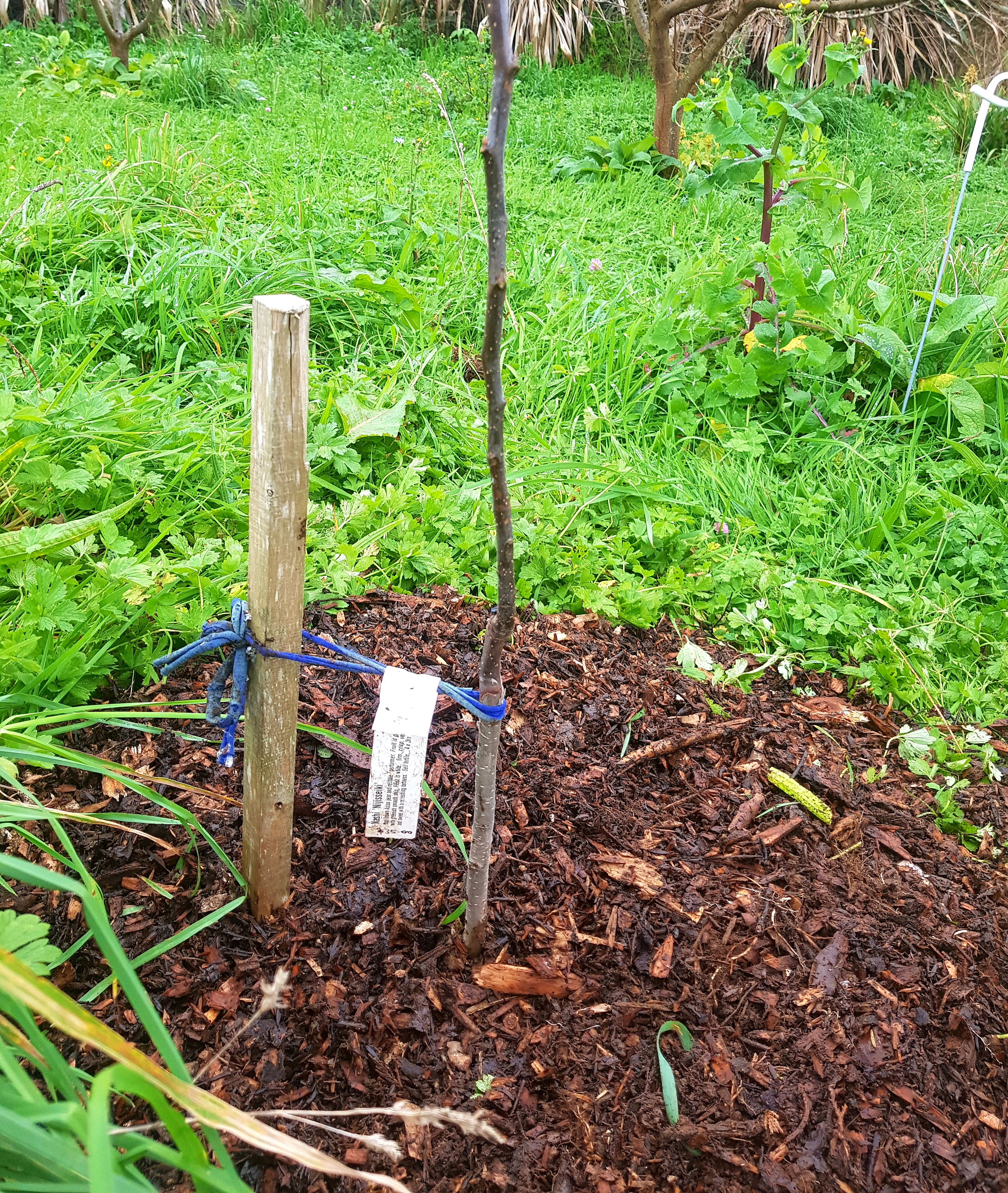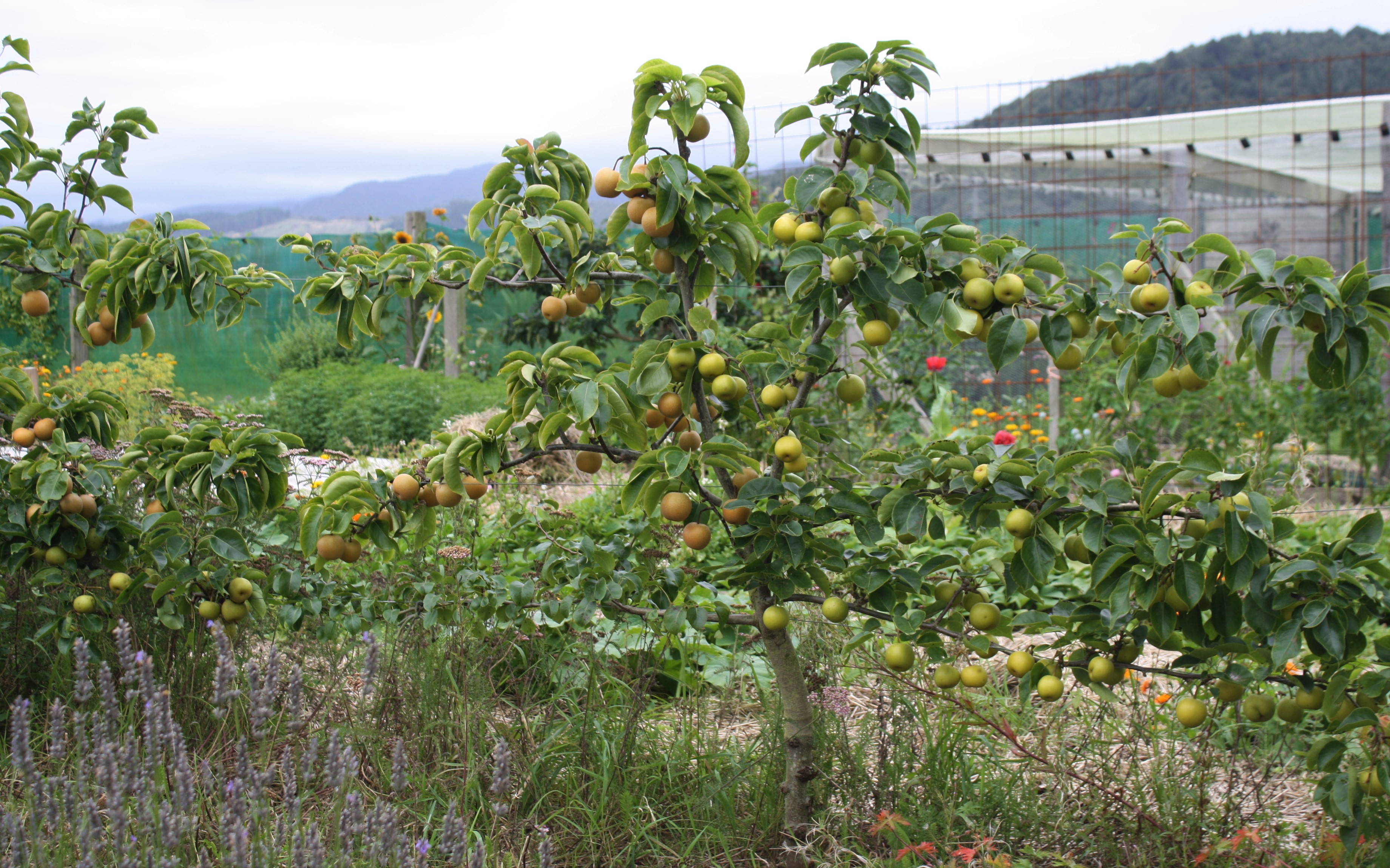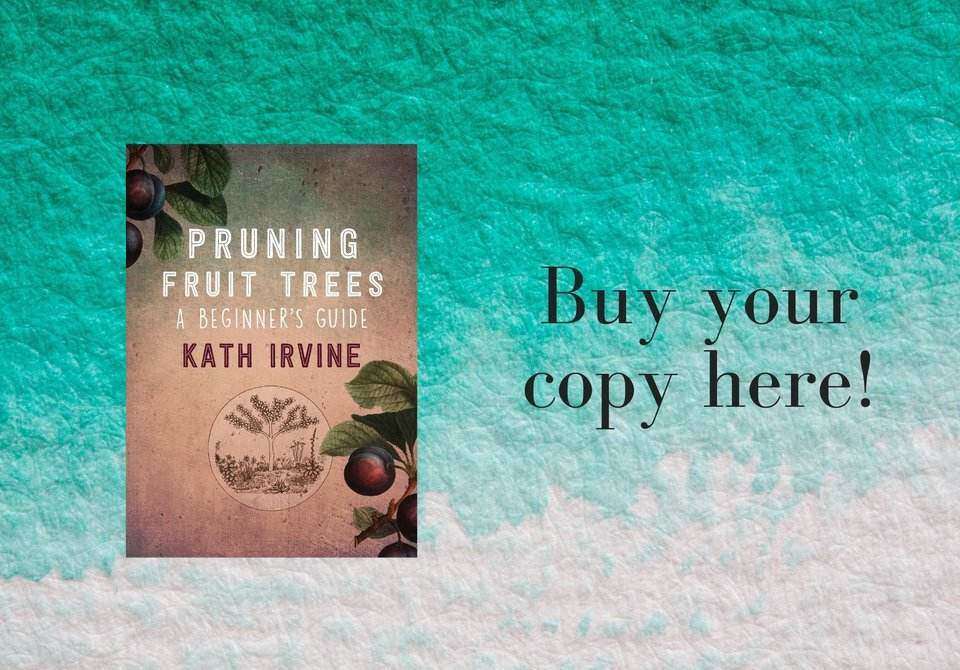How to Plant + Prune Deciduous Fruit Trees


Fruit trees perform better by far when grown in native soil - ie soil that's original to your site. Deciduous fruit trees don't need compost + fert around their roots - the original soil is perfect especially if you've matched your rootstocks to it. What they need is a fungal environment - one created by woody mulches. Lots of compost tips the balance towards bacterial dominance - an environment best suited to annual vegies, not trees.
Plant

Dig a hole that matches the size of the tree roots - it doesnt need to be any bigger. Be sure the graft is sitting well above the soil line and any young roots on top aren't buried too deep.
If you're planting bare root trees, create a hump of soil to rest the roots on and spread them out and around. Trim off any that are too long and backfill with the original soil. I like to use my fingers to push the soil in around the roots. Give it a good tug after planting, to be sure its secure, and then a slow, gentle water to further settle any air pockets around the roots. Top up with soil if need be.
A tree in a PB (planter bag), benefits from sitting in a bucket of water before planting, until bubbles no longer appear. Plant it into a hole the same size as the PB. It needs no watering afterwards, unless the soil is parched and dry in which case watering the bottom of the hole before planting is of more use, encouraging roots downward and outward.
- Where soil is poor (sand, rotten rock, alpine types), you'll do well to mix a little compost in with the original soil.
- Where drainage is poor and there is no opportunity to improve it, create a half in, half out scenario so the tree is a little above the ground on a mound.
Mulch + Stake

Once the tree is planted, that's when the feeding happens. Rich, loamy soils can jump straight to mulch, but most other soils will need a spade or two's worth of homemade compost or cheats compost or good soil from beneath established trees. A sprinkle of gypsum is a good idea if heavy clay is your lot.
Then comes the most important bit - the mulch. Use chipped wood. Broken down, lignin rich woody stuff drives the beneficial fungi that are at the heart of your trees wellness. The best chips are a mixture, ideally the slim branches and twigs from the outside edges of the trees - these are called Ramial chips and they're the ultimate. If you cannot source these, then scrounge as good of a mixture of woodsy debris as you can. Scatter this around the base of the tree and then set to and begin your herbal ley plantings, the perennial companions around who's root systems the fungal allies will latch. This is the trees disease/ pest resistance + nutrient capture system, and its as old as time. Easy orcharding ahoy!
Staking is about support. For the end goal of an independent, resilient tree - your tree needs to move about in the wind. This inspires it to send out more roots and is especially important if your tree is in a windy spot. As well as a bit of support while they establish, stakes are useful for identification where young trees may get lost in the grass or reversed over. Not all trees, however, need a stake.
Bang the stake about 200mm away from the trunk and firmly, but not rigidly tie with a (as in one!) soft stocking tie.
Remove the ties + labels that came from the nursery. If left on, these cut into the bark as the annual growth rings fatten the trunk.
Prune It

Pruning, at planting, is about establishing the first layer (scaffold) of branches - they will shoot out from this cut. If the tree is at the perfect height already, then leave it be. I usually start the first branches off about hip height - therefore I cut back to a bud that's about 1m from the ground. But much depends - make your tree work in the space you have. You may wish for a taller tree and the first set of branches to begin quite high if, for example, its on the edge of the driveway. Or you may need a shorter tree if your garden is really windy. You'll want it to grow low so as to easily tuck it inside shelter.
- Espalier: Cut your tree to a bud, just below the first wire.
- Fan trained: Cut your tree back to somewhere in the range of 60cm - 100cm, at a place where there are a few buds to create the side arms.
Your new tree will either be a maiden whip - a trunk with no branches, or a feathered whip which has some branches.
Maidens are easy, simply leave them as is, or cut back to a bud at the height you wish the branches to spring from. A feathered whip, is a little trickier. If its a big size, its too much to chop it back to 1m. You can keep well placed feathers (branches) or remove them - up to you. If you remove them, the new ones that grow will all be of the same age and have good balance.

